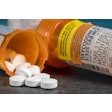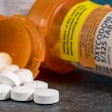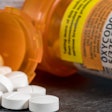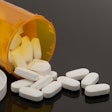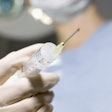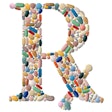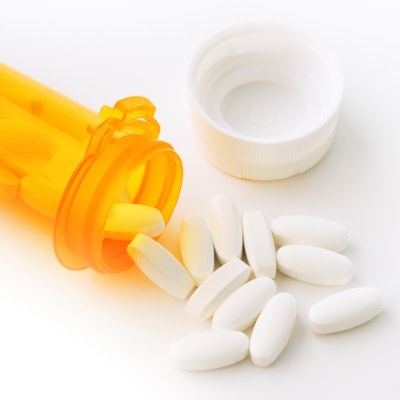
How many opioids should you prescribe following dental surgery? It depends on the procedure, according to a panel of dental experts from Johns Hopkins University. They recently published new prescribing guidelines for 14 types of dental procedures.
 William Bruhn, co-director of CORE.
William Bruhn, co-director of CORE.The guidelines, posted on the Center for Opioid Research and Education (CORE) website on August 14, recommend that dental professionals start by first prescribing acetaminophen and/or ibuprofen for patients without contraindications. They then suggest a maximum number of opioids for each procedure, ranging from none for some procedures to up to 15 tablets for extraction of impacted teeth and third molars.
"The type of opioid and amount should be customized for every patient depending on their individualized needs," William Bruhn, co-director of CORE, told DrBicuspid.com. "But we hope dentists will use these guidelines as a starting point to consider what their common patients will need postoperatively."
An 'ideal' number of opioids
“The type of opioid and amount should be customized for every patient depending on their individualized needs.”
Dentists are prescribing more opioids over time, despite the fact that many prescribed opioids aren't used in the first place and that they carry a significant risk for long-term use and addiction. To help reduce excessive prescribing and combat the ongoing opioid epidemic, multiple organizations have called for dentists to prescribe no more opioid tablets than necessary. But how many opioid tablets are too many following dental procedures?
A panel of 16 dentists, periodontists, oral and maxillofacial surgeons, endodontists, general surgeons, and patients sought to answer that question by creating prescribing guidelines for common dental procedures, including tooth extraction, bone grafting, and implant surgery. The guidelines were designed for opioid-naive adult patients who do not have chronic pain or other complications.
The panel recommended dental professionals begin by prescribing 1,000 mg of acetaminophen every eight hours and/or 400 mg of ibuprofen every eight hours for patients without contraindications. They also recommended 5 mg oxycodone tablets for some procedures if necessary.
| Maximum number of opioids by procedure as recommended by CORE | |
| Procedure | If needed, maximum No. of oxycodone, 5 mg tablets |
| Alveoloplasty | 12 |
| Bone grafting | 12 |
| Extraction of impacted teeth, including third molars | 15 |
| Flap | 0 |
| Gingivectomy | 0 |
| Implant surgery | 10 |
| Osseous procedures | 0 |
| Periradicular surgery | 4 |
| Periodontal bone grafting and regeneration | 6 |
| Routine tooth extraction | 0 |
| Soft-tissue grafting | 10 |
| Surgical extraction | 12 |
| Tooth resection/root amputation | 0 |
"To our surprise, we found there were no procedure-specific guidelines regarding what providers should be prescribing," Bruhn said. "So, we took it upon ourselves to convene experts across varying fields and come up with ideal opioid prescribing practices for narcotic-naive patients."
Always consider the patient
It is important to note that the guidelines are just recommendations, and medication and dosage should depend on the individual patient. For instance, not all patients can take nonsteroidal anti-inflammatory medication, and some patients may not desire opioids at all.
"Our patient representatives consistently voted for fewer opioids prescribed than clinicians," Bruhn said. "Often times, even suggesting no opioids were needed."
Nevertheless, the guidelines provide an outline for what dentists should consider when prescribing medication for the average patient, and Bruhn hopes the dental community finds them useful.
"The type of opioid and amount should be customized for every patient depending on their individualized needs, but we hope dentists will use these guidelines as a starting point to consider what their common patients will need postoperatively," he said.
Editor's note: The original version of this story included guidelines for both oxycodone and hydrocodone. The Center for Opioid Research and Education later removed its hydrocodone tablet recommendation. The story has been updated accordingly.










